Text
Banking Groups Sue to Block New CRA Rules

A group of industry organizations have filed suit to block regulators’ new Community Reinvestment Act rules. According to the plaintiffs in the case, regulators are exceeding their authority with the proposed rules. Additionally, the plaintiffs argue that the new CRA rules conflict with the statutory language of the CRA.
The plaintiff groups include the U.S. Chamber of Commerce, the Independent Community Bankers of America, and the American Bankers Association. The suit, filed in Texas, names the FDIC, Federal Reserve, and Office of the Comptroller of the Currency as defendants.
What are the new CRA rules designed to achieve?
Regulators confirmed the new CRA rules in October 2023. The government claimed that the new interpretation of the CRA was part of a modernization effort for banking regulation. Specifically, agencies say that the rule modifications will help them properly regulate banks’ online and mobile application banking services.
Notably, regulators say they need the rules to deter redlining and other lending discrimination. According to the government, rule changes are needed to ensure that lenders provide fair services to low-income borrowers. In their suit, the plaintiffs claim that the new rules are more likely to reduce lending to those customers, thanks to higher costs imposed on lenders.
Pushing back on regulators
The last three years have seen an increase in the banking sector's attempts to push back on growing regulation. Traditionally, the industry has tried to work with agencies to avoid tension. However, the current government's posture toward the industry has already been tense, with agencies seeking ever broader powers over the sector.
The ABA released a statement announcing the new CRA rules lawsuit, noting that "ABA and our co-plaintiffs will call on the court to immediately intervene and issue a preliminary injunction that will prevent the new rules from taking effect. In addition, the plaintiffs ask the court to issue an order and judgment setting aside the CRA rules as illegal or impermissible.”
Related Articles:
- Bank Capital Rule Changes Proposed by U.S. Regulators
- Class Action Suit Alleges BofA Misled Paycheck Protection Program Borrowers
- FinCEN Alert Warns About Russian Attempts to Use Real Estate Investments to Evade Sanctions
- SBA Fintech Proposal Meets Pushback from Bank Trade Group
- Regulators Propose Stricter Long-Term Debt Issuance Rules for Regional Banks
Read the full article
0 notes
Text
Fed Signals No Imminent Rate Cuts Ahead

Despite market expectations for imminent rate cuts, the Federal Reserve today confirmed its intent to leave interest rates at their current level. That marks the fourth straight pause on those rates, as inflation has continued to plague American consumers.
Inflation remains too high for the Fed’s liking
The Federal Reserve has long committed to maintaining a 2% rate of inflation. That goal was last seen in 2021, when the current price increase crisis began. Since then, consumers have seen prices rise dramatically, far outpacing many Americans’ incomes. That prompted a string of Fed interest rate hikes as the central bank tried to cool the economy to temper price increases.
Though many analysts predicted that slowed inflation might prompt imminent rate cuts, the Fed has opted for a more cautious approach. Last week’s Commerce Department report confirming a surge of consumer spending at the end of 2023 may have also played a role in the Fed’s decision.
The outlook for imminent rate cuts?
Strong expectations for GDP, resilient consumer spending, and expected reductions in government spending could impact future Fed rate decisions. Chairman Jerome Powell has consistently outlined his expectations for considering rate cuts. Today he said, “We want to see more good data. It is not that we are looking for better data but a continuation of the better data.”
In his remarks today, Powell did identify one thing that could compel the Fed to move toward imminent rate cuts. According to him, that could happen if they saw a sudden deterioration in the country’s labor market. The Chairman has previously suggested that weakening in that market needed to occur to successfully rein in inflation.
In recent months, the markets have consistently tried to factor in expectations for imminent rate cuts. The Federal Reserve has consistently tried to dampen those expectations. After Powell essentially told investors not to expect rate cuts in March, the Dow dropped by nearly 300 points.
Related Articles:
- Fed Chair Suggests It’s Too Early to Consider Interest Rate Cuts
- Big news! The interest rate wave is at a 22-year high! 📈
- MARKETS DIVE AS FED RAISES RATES AGAIN AND POWELL SUGGESTS FIGHT AGAINST INFLATION FAR FROM DONE
- Are U.S. Consumers Expecting Accelerating Inflation?
- I ran a bank.But the most cash I’ve ever seen was $420k on 4/20/20 😏
Read the full article
0 notes
Text
NYC Sues FDIC for Overdue Signature Bank Taxes

New York City is suing the Federal Deposit Insurance Corporation (FDIC) over $44 million in overdue taxes Signature Bank taxes. According to Bloomberg, the suit was filed in a Manhattan federal court on Monday. The suit targets the FDIC in its role as the failed bank’s designated receiver.
The overdue Signature Bank taxes
The lawsuit is the second attempt by the city to collect unpaid municipal taxes from the FDIC. Earlier this month, the city took action to collect more than $2 million in taxes owed by Silicon Valley Bank. The agency’s refusal to pay those back taxes prompted the first legal action.
The latest attempt to collect unpaid taxes from failed banks comes on the heels of an audit by New York City finance personnel. That audit reportedly discovered a range of tax “discrepancies” between 2015 and 2021. Those discrepancies involved alleged irregularities ranging from adjustments to capital income and reported investments to failures to report various income allocations.
According to the city, it was forced to take legal action when the failed bank’s receiver refused to address the back tax issue.
Ongoing controversies at the FDIC
Meanwhile, the FDIC continues to be the subject of intense scrutiny regarding its alleged toxic workplace culture. Months ago, the agency created a special committee to investigate allegations of harassment, discrimination, and other inappropriate conduct.
Capitol Hill lawmakers have taken a special interest in the alleged improprieties as well. In November 2023, the agency’s head was grilled in Senate Banking Committee hearings by senators who expressed outrage over the allegations.
FDIC Chairman Martin Gruenberg attempted to deflect criticism by suggesting that his agency had addressed previous inspector general criticisms of the FDIC’s workplace culture. However, he also acknowledged that those efforts had likely failed to change that culture.
The latest suit for overdue Signature Bank taxes is yet another problem for the embattled agency to deal with. It’s also another reminder that the full effects of the 2023 banking crisis have yet to be realized.
Related Articles:
- Ever wondered why I'd put my millions into brick-and-mortar property, rather than a 401(k)?
- Regulators Vow to Cover Uninsured Deposits at Failed Banks
- NYC Announces New Measures to Combat Banking Discrimination
- LA-Based Bank to Pay Largest Redlining Settlement Ever
- Climate Activists Agitate to End Non-Renewable Energy Funding
Read the full article
0 notes
Text
Navigating the Future: Decoding Financial Trends with VISBANKING Data Analytics
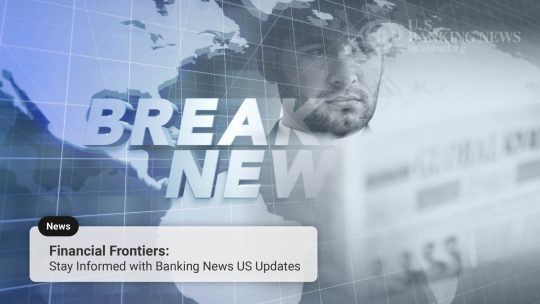
Estimated reading time: 4 minutes
Table of contents- Understanding Financial Trends: VISBANKING Data Analytics- Unraveling the Dynamics of Financial Trends- The Power of VISBANKING Data Analytics
- 1. Real-time Data Processing
- 2. Predictive Analytics
- 3. User-Friendly Interface
- Navigating Market Volatility- 1. Risk Management
- 2. Global Economic Insights
- Future-Proofing with VISBANKING- 1. Innovation in Finance
- 2. Adaptability to Regulatory Changes
- Conclusion
Understanding Financial Trends: VISBANKING Data Analytics
In today's rapidly evolving financial landscape, staying ahead is not just an advantage; it's a necessity. For businesses and individuals alike, having a clear understanding of financial trends is crucial for making informed decisions. This is where VISBANKING and its powerful data analytics come into play, offering a unique window into the complex world of finance.
Unraveling the Dynamics of Financial Trends
Financial trends are like the heartbeat of the economy, pulsating with changes in consumer behavior, market conditions, and global events. Deciphering these trends can be challenging, often akin to solving a puzzle with numerous pieces constantly shifting places. VISBANKING, however, acts as a reliable compass, providing a comprehensive and intuitive platform for analyzing financial data.
The Power of VISBANKING Data Analytics
VISBANKING stands at the intersection of technology and finance, leveraging advanced data analytics to extract meaningful insights. Here's how it contributes to a deeper understanding of financial trends:
1. Real-time Data Processing
In the fast-paced world of finance, timely information is everything. VISBANKING excels in processing vast amounts of data in real-time, ensuring that users have access to the latest market trends and economic indicators. This capability is invaluable for making swift and well-informed decisions.
2. Predictive Analytics
Beyond just reporting current trends, VISBANKING goes a step further with predictive analytics. By analyzing historical data and employing sophisticated algorithms, it can forecast potential future trends. This foresight empowers users to anticipate market movements and proactively adjust their strategies.
3. User-Friendly Interface
Financial data, while rich in insights, can be overwhelming. VISBANKING tackles this challenge with an intuitive and user-friendly interface. Complex data sets are transformed into visually appealing charts and graphs, making it easier for users to grasp trends at a glance.
Navigating Market Volatility
In an era where markets are increasingly characterized by volatility, having a tool like VISBANKING becomes indispensable. Market fluctuations, geopolitical events, and economic policy changes can all have profound impacts on financial trends. Here's how VISBANKING helps users navigate through these uncertainties:
1. Risk Management
Understanding financial trends is not just about identifying opportunities; it's also about managing risks. VISBANKING provides risk assessment tools that enable users to evaluate potential downsides and take mitigating actions.
2. Global Economic Insights
The interconnectedness of today's global economy means that events in one part of the world can ripple across financial markets. VISBANKING aggregates global economic data, offering users a holistic view of international trends and their potential impact on local markets.
Future-Proofing with VISBANKING
In a world where change is the only constant, future-proofing one's financial strategy is imperative. VISBANKING's capabilities extend beyond immediate trends, empowering users to position themselves for the future:
1. Innovation in Finance
Financial markets are evolving with the advent of technologies like blockchain and artificial intelligence. VISBANKING actively monitors these technological shifts, providing insights into how innovation might reshape the financial landscape.
2. Adaptability to Regulatory Changes
The regulatory environment is ever-changing. VISBANKING keeps users informed about regulatory shifts, helping them adapt their strategies to remain compliant and capitalize on emerging opportunities.
Conclusion
In the journey of understanding financial trends, VISBANKING is not just a tool; it's a strategic ally. By harnessing the power of data analytics, VISBANKING equips users with the insights needed to navigate today's dynamic financial landscape. Whether you're an investor, business owner, or financial professional, staying ahead is not a luxury — it's a requirement. With VISBANKING, the future of finance is not just seen; it's understood and embraced.
In the ever-changing landscape of finance, VISBANKING is your compass. Decode trends, mitigate risks, and embrace the future with confidence.
- Exploring Cutting-Edge Technologies Empowering US Banks: A Deep Dive into Visbanking Banking Report Portal
- Explore Banking Data: Financial Analysis with VISBANKING
- It’s not just about crunching the numbers
- Don't let data scare you!
- Did you know that your bank may not be giving you the full picture?
Read the full article
0 notes
Text
Why does bank data matter more than you think?
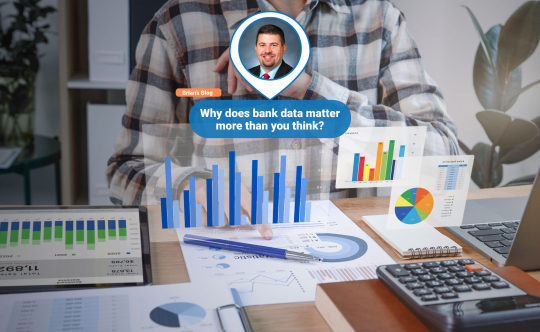
Banks are like a goldmine of data. Every transaction, every customer interaction, and every financial report is another nugget of information waiting to be utilized. Why does this matter?
1. Data fuels decision making:
In the world of banking, data-driven insights can lead to improved services, reduced costs, and more efficient operations. By understanding customer behavior better, banks can tailor their services more effectively.
2. Fraud detection and prevention:
Fraud can be costly for banks. However, with access to extensive transaction data and sophisticated analytics tools, banks can identify patterns that signify fraudulent activities.
3. Personalized Services:
Data enables banks to create personalized offerings for each client based on their behavior patterns, spending habits, and financial goals.
The banking industry has just started to scratch the surface of how effectively it can use data. As this trend continues, expect your bank to become even more responsive and efficient.
So next time you wonder why your bank is asking for so much information or why they're so interested in your transaction history- remember they're just mining for gold! Let's continue to push for transparency around how our data is used.
💡 Let’s stop just collecting data. Let’s start making it work for us. Let’s transform banking, together. 💡
🔔 Follow Brian on Linkedin: Brian Pillmore
Related Links:
- The Future of Banking: Technology's Impact on U.S. Financial Institutions
- As Expected, Fed Proposes Reduction in Cap on Bank Card Transaction Fees
- New Poll Finds Consumers Focused on Security and Identity Fraud Protection When Choosing Banks
- Check out the man behind the curtain.
- Innovate and Excel with BIAS, Your Banking Ally
Read the full article
0 notes
Text
Green Financing Earnings Outpaced Traditional Energy Financing in 2023

According to Bloomberg, large lenders earned roughly $3 billion from financing so-called “green” projects last year. Meanwhile, lenders reportedly made less than $2.7 billion from the financing of energy projects involving gas and oil. That marks the second consecutive year in which the globe’s largest banks earned more from green financing than traditional energy deals.
The drive for green financing
Recent years have seen the world’s finance industry increasingly focused on devoting more funding to green energy projects. That drive has occurred as the industry has trumpeted its desire to achieve “net zero” emissions. As Bloomberg notes:
“According to an analysis by BloombergNEF, four times as much capital needs to be allocated to green projects as to fossil fuels by 2030 to align with net zero emissions targets. Yet at the end of 2022, that ratio was just 0.7 to 1, largely unchanged from the previous year, BNEF’s latest figures show.”
Notably, progress toward those stated goals has been less than uniform. For example, Europe’s finance sector have been far more aggressive than many U.S. banks. Companies like JPMorgan Chase and Wells Fargo earned hundreds of millions of dollars from funding traditional energy projects in 2023.
U.S. backlash against the net zero push
Part of that disparity in results is due to the differences in political climates between the two regions. Europe has taken a more centralized approach, with its central bank issuing fines against companies that fail to meet its targets. That’s a far different approach than the less centralized regulatory environment in the U.S.
Indeed, multiple U.S. states have taken action to rein in lenders who might threaten to starve traditional energy firms of needed financing. In some states, leaders have targeted banks and other lenders who unfairly restrict finance for oil, coal, and gas companies.
Still, the green financing push appears to be continuing apace. Globally, banks reportedly financed some $583 billion in green project loans and bonds in 2023. During the same period, traditional energy projects received roughly $527 billion.
Related Articles:
- How can technology revolutionize traditional banking?
- Deutsche Bank Exec: Include Fossil Fuel Shares in ESG Funds
- New Labor Dept Report Confirms Accelerating Inflation as Household Expenses Rise
- Transitioning from a Traditional Bank to a Digital Bank: What Does it Take?
- Brian Pillmore
Read the full article
0 notes
Text
How can data science transform the banking industry?

In the era of Big Data, banks sit on a goldmine of customer-related information. Harvesting this data intelligently can result in enhanced services and better risk management. Here's how:
1. Personalized customer experience -With the help of machine learning and AI, banks can draw on data to create hyper-personalized experiences for customers. Imagine if your bank knew your financial goals before you did, that’s the power of predictive analytics.
2. Fraud detection -Through pattern recognition, advanced algorithms can quickly detect anomalies that may signify fraudulent transactions. This prompt detection not only saves a significant amount economically but also improves customers' trust.
3. Better risk assessment -Data science can improve risk models which are used for lending decisions by incorporating more diverse data and real-time factors.
Data isn't an asset until it's leveraged in impactful ways. These are just a few examples of how banks can use data to streamline processes, increase efficiency, and improve customer relationships.
Your thoughts?
💡 Let’s stop just collecting data. Let’s start making it work for us. Let’s transform banking, together. 💡
🔔 Follow Brian on Linkedin: Brian Pillmore
Related Links:
- Revolutionize Your Bank's Performance with BIAS: Unlocking the Future of Visual Banking Data
- In our rapidly evolving digital age, traditional banking models are being overturned
- What do data science and the banking industry have in common?
- Check out the man behind the curtain.
- Don't let data scare you!
Read the full article
0 notes
Text
The Financial Accounting Standards Board (FASB) has decided against making any alterations...

The Financial Accounting Standards Board (FASB) has decided against making any alterations to the way companies handle held-to-maturity securities.
This has been an ongoing debate, punctuated by financial crises from the early 90s savings-and-loan debacle to the 2008 financial meltdown and most recently, the collapse of Silicon Valley Bank.
Under current guidelines, the way companies report debt securities can vary dramatically based on their stated plans for those securities. For banks and financial institutions that classify bonds as held-to-maturity securities, they can omit unrealized losses from equity as long as they don’t sell.
Switching gears can be costly. If banks opt to sell any HTM securities, they are forced to reclassify all their HTM securities as available for sale. This could lead to significant loss on the securities they didn't sell.
On Wednesday, FASB declared it won't be considering any changes to these rules. They won't be requiring banks to disclose the fair value of their HTM securities on the balance sheet, which many banks already practice.
This decision has significant implications. It means that the status quo remains, but it also means that the potential risks and challenges associated with HTM securities continue to loom.
As Bank CFOs, it's essential to stay on top of these developments and adjust strategies accordingly. Remember, the key to successful finance management lies in staying informed and being adaptable.
Take a moment to reflect: How will this decision impact your bank's financial strategy? Let's keep the conversation going in the comments.
💡 Let’s stop just collecting data. Let’s start making it work for us. Let’s transform banking, together. 💡
🔔 Follow Brian on Linkedin: Brian Pillmore
Related Links:
- The FFIEC: Regulating and Supervising Financial Institutions to Maintain a Safe and Sound Financial System
- Rise and shine, CFOs! The financial landscape just shifted, and here's what you need to know
- Fed Unveils 2023 Bank Stress Test Scenarios
- New Poll Finds Consumers Focused on Security and Identity Fraud Protection When Choosing Banks
- U.S. Bank Fined $37.5 Million for Fake Customer Account Violations
Read the full article
0 notes
Text
What do data science and the banking industry have in common?
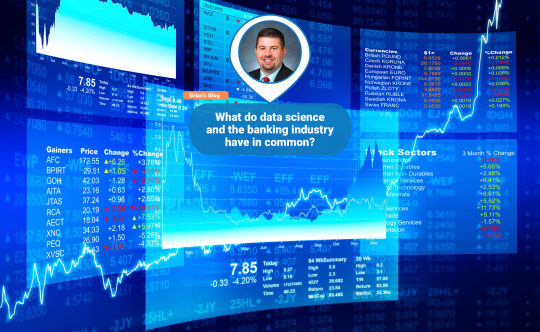
Data is the glue that's binding the world today. Especially in industries like banking where everything revolves around figures. Data science and actionable business intelligence are no longer optional – they’re a necessity in the age of big data. Here's why:
1. Efficient Decision-Making - Data-driven decisions don't just enhance productivity, but also help avoid costly mistakes.2. Risk Management - Better insights obtained through data analysis can help banks identify potential risks and deal with them proactively.3. Enhanced Customer Experience - Personalization is key to retaining customers today, and this can only be achieved by thoroughly analyzing user data.
It is clear that integrating data science with banking operations will drive profitability and efficiency. But to realize these benefits, it’s essential to have sound strategies for managing, analyzing, and leveraging this data.
As leaders on this front, we should continue to push for innovation and development in using data as the key tool for our industry's growth. Thoughts? Let's discuss in comments!
💡 Let’s stop just collecting data. Let’s start making it work for us. Let’s transform banking, together. 💡
🔔 Follow Brian on Linkedin: Brian Pillmore
Related Links:
- In our rapidly evolving digital age, traditional banking models are being overturned
- Check out the man behind the curtain.
- It’s not just about crunching the numbers
- Don't let data scare you!
- I recently had a customer ask if they could have a copy of all our underlying data.I didn’t even hesitate to say yes.
Read the full article
0 notes
Text
Bring Your Banking Data to Life: Visualization with VISBANKING

Estimated reading time: 4 minutes
Table of contents- The Rise of VISBANKING- Key Features
- 1. Interactive Dashboards
- 2. Real-time Updates
- 3. Customizable Reports
- 4. Predictive Analytics
- The VISBANKING Experience
- Bringing Your Banking Data to Life
- The Future of Banking is Visual
In an era where data rules the financial world, the ability to understand and interpret that data is paramount. Raw numbers and spreadsheets can be overwhelming, leaving individuals and businesses grappling with the complexity of their financial landscape. This is where Visbanking steps in, transforming the way we interact with financial data through intuitive and visually engaging tools.
The Rise of VISBANKING
Visbanking, a portmanteau of 'visual' and 'banking', signifies a paradigm shift in the financial sector. More than just a platform, it's a movement towards making banking data not only comprehensible but enjoyable. The traditional banking experience often involves poring over tables of transactions and trying to make sense of abstract numbers. However, with Visbanking, these numbers come to life through interactive and dynamic visualizations. Financial Insights
Key Features
1. Interactive Dashboards
Say goodbye to static reports that leave you more confused than informed. Visbanking's interactive dashboards allow users to drill down into specific data points, uncovering trends, anomalies, and opportunities with a few clicks. Whether you're a financial analyst or an individual managing personal finances, this feature provides a personalized and detailed view of your financial landscape.
2. Real-time Updates
In the fast-paced world of finance, timing is everything. Visbanking ensures that you're always in the loop with real-time updates. Whether it's market trends, account balances, or transaction details, the information you need is at your fingertips when you need it. This real-time aspect empowers users to make informed decisions promptly. Financial Insights
3. Customizable Reports
No two users have the same financial priorities. Visbanking acknowledges this diversity by offering customizable reports. Tailor your visualizations to focus on what matters most to you, whether it's budget tracking, investment performance, or expense analysis. The ability to mold the platform to your unique needs adds a level of personalization that is often lacking in traditional banking interfaces.
4. Predictive Analytics
Visbanking goes beyond the present, incorporating predictive analytics to forecast future financial scenarios. This forward-looking feature is invaluable for businesses planning budgets, investors making strategic decisions, and individuals preparing for major life events. By leveraging machine learning algorithms, Visbanking transforms historical data into actionable predictions.
The VISBANKING Experience
Imagine a banking experience where you don't dread checking your balance or reviewing your expenses. With Visbanking, financial management becomes an immersive and visually stimulating journey. The platform's user-friendly interface ensures that both finance experts and novices can harness its power without a steep learning curve.
Whether you're monitoring your investments, analyzing spending patterns, or planning for the future, Visbanking offers an unparalleled experience. The days of being perplexed by financial statements are over; welcome to a future where your financial data is not just comprehensible but visually spectacular. Financial Insights
Bringing Your Banking Data to Life
The keyword "visual banking" encapsulates the essence of what Visbanking brings to the table. It's not just about managing your finances; it's about bringing your banking data to life in a way that is meaningful and accessible. As the financial world becomes increasingly complex, tools like Visbanking are essential for navigating this complexity with ease.
In a world where information overload is a constant challenge, the ability to visualize data is a game-changer. Visbanking does not just present numbers; it tells a story. It transforms rows and columns into a narrative that users can understand, engage with, and act upon.
The Future of Banking is Visual
As we move into an era where data is abundant and insights are invaluable, the future of banking lies in visualization. Visbanking is at the forefront of this revolution, leading the way towards a financial landscape that is not just numbers but a vibrant tapestry of insights.
In conclusion, if you've ever felt overwhelmed by your banking data, it's time to embrace the visual revolution with Visbanking. Unlock the full potential of your financial data, gain insights effortlessly, and embark on a journey where managing your finances is not a chore but a visually stimulating experience. Welcome to the future of banking—welcome to Visbanking.
- Revolutionize Your Bank's Performance with BIAS: Unlocking the Future of Visual Banking Data
- Seeing Is Believing: The Power of Financial Data Visualization
- The Future of Financial Analytics: Solutions by VISBANKING
- Ever wondered how the banking and information services world cross paths with family life?
- Explore Banking Data: Financial Analysis with VISBANKING
Read the full article
0 notes
Text
Visualize Success: Empower Your Financial Strategy with Visbanking's Powerful Graphics

Estimated reading time: 3 minutes
Table of contents- The Art of Financial Visualization
- Unlocking Insights with Visbanking's Dynamic Graphics
- 1. Trend Analysis through Time-Series Graphs
- 2. Comparative Analysis with Bar and Line Charts
- 3. Dynamic Pie Charts for Expense Breakdown
- Navigating Decisions Confidently
- Elevating Your Strategy with Visbanking
- Conclusion: Empower Your Future with Visbanking's Financial Graphics
In the ever-evolving landscape of finance, data is king. However, the true power lies in how effectively you can interpret and utilize this data to make informed decisions. Visbanking, your trusted partner in financial insights, takes this a step further by providing a suite of powerful graphics that can revolutionize the way you perceive and act on financial information.
The Art of Financial Visualization
In the complex world of banking and finance, clarity is paramount. Traditional spreadsheets and textual reports often fall short in conveying the full spectrum of financial data. This is where the art of financial visualization comes into play. Visbanking understands that the human brain processes visuals faster than text, and thus, they've crafted a platform that transforms raw data into clear, compelling graphics.
Unlocking Insights with Visbanking's Dynamic Graphics
Visbanking's commitment to empowering your financial strategy is evident in the diversity and richness of its graphics suite. From intuitive bar graphs illustrating revenue trends to dynamic pie charts breaking down expenditures, every graphic is meticulously designed to provide actionable insights at a glance.
1. Trend Analysis through Time-Series Graphs
Visbanking's time-series graphs offer a comprehensive view of financial trends over time. Whether you're analyzing revenue growth, expense patterns, or market fluctuations, these graphs provide a visual narrative that facilitates quick comprehension and strategic decision-making.
2. Comparative Analysis with Bar and Line Charts
Comparative analysis is made simple with Visbanking's bar and line charts. Easily compare the performance of different financial parameters side by side, identifying correlations and trends that might go unnoticed in a spreadsheet. Make strategic decisions with confidence, backed by a clear understanding of your financial landscape. Empower Strategy
3. Dynamic Pie Charts for Expense Breakdown
Understanding where your money goes is crucial for effective financial management. Visbanking's dynamic pie charts break down expenses into easily digestible slices, allowing you to pinpoint areas of overspending or potential cost-saving opportunities. This visual representation fosters a proactive approach to financial decision-making.
Navigating Decisions Confidently
In the fast-paced world of finance, decisions need to be made swiftly and confidently. Visbanking's graphics empower you to do just that. The ability to absorb complex financial information at a glance reduces the decision-making timeline, giving you a competitive edge in today's dynamic markets. Empower Strategy
Elevating Your Strategy with Visbanking
Visbanking is not just a platform; it's a strategic ally in your financial journey. By offering a visually immersive experience, it transforms data from a daunting sea of numbers into a story that you can easily comprehend and act upon. Whether you're a seasoned financial professional or a budding entrepreneur, Visbanking caters to your unique needs, ensuring that you're always a step ahead in your financial endeavors.
Conclusion: Empower Your Future with Visbanking's Financial Graphics
In a world where information is abundant, the ability to derive meaningful insights from data is a competitive advantage. Visbanking's suite of powerful graphics equips you with the tools you need to make strategic decisions confidently. Take control of your financial destiny, unlock the power of visualization, and chart a course towards success with Visbanking.
- Seeing Is Believing: The Power of Financial Data Visualization
- Analyzing US Banks' Income and Expenses: A Comprehensive Overview
- Are you just dipping your toes into the vast ocean of data? Feeling a little bit lost? Fear not! Here are a few beginner-friendly tips.
- Explore Banking Data: Financial Analysis with VISBANKING
- I got over 50 Colombian data scientists to come drink beer at a bar with me.
Read the full article
0 notes
Text
The Future of Financial Analytics: Solutions by VISBANKING
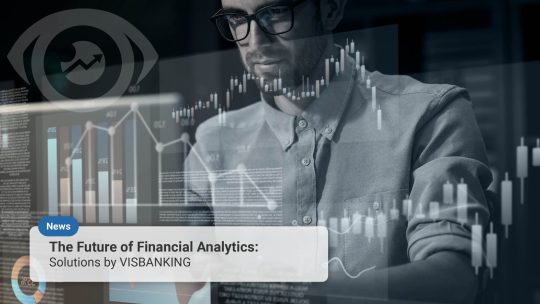
Estimated reading time: 4 minutes
Table of contents- The Current Landscape
- The Visbanking Advantage- 1. Advanced Analytics Capabilities
- 2. Customizable Dashboards
- 3. Real-Time Monitoring and Alerts
- 4. Security and Compliance
- The Future Unveiled- 1. Blockchain Integration
- 2. Enhanced AI and Machine Learning
- 3. Quantum Computing Exploration
- Conclusion: Shaping Tomorrow, Today
In the dynamic landscape of finance, staying ahead requires not just adaptation but innovation. As we step into the future, the role of financial analytics becomes increasingly pivotal. It's not just about collecting data; it's about deriving meaningful insights that can steer decisions and shape strategies. In this realm of evolving financial technologies, Visbanking emerges as a trailblazer, redefining the future of financial analytics.
The Current Landscape
The financial world is inundated with vast amounts of data. From customer transactions and market trends to regulatory changes, the sheer volume and complexity of this information can be overwhelming. Traditional banking systems are struggling to keep pace with this data deluge, leading to missed opportunities and heightened risks.
This is where Visbanking steps in, breaking the mold of conventional financial analytics. With a commitment to innovation, Visbanking understands that the future demands more than just basic data processing; it requires a nuanced understanding of patterns, trends, and anomalies that traditional systems might overlook.
The Visbanking Advantage
1. Advanced Analytics Capabilities
Visbanking's suite of tools goes beyond basic reporting. Through machine learning algorithms and artificial intelligence, it analyzes historical and real-time data to provide predictive insights. This not only enhances decision-making processes but also allows financial institutions to proactively respond to market changes.
2. Customizable Dashboards
No two financial institutions are alike. Recognizing this, Visbanking offers highly customizable dashboards. Whether you're a small credit union or a multinational bank, the platform adapts to your unique needs. This ensures that the insights gained are not only accurate but also relevant to the specific context of your operations. Financial Insight
3. Real-Time Monitoring and Alerts
In the fast-paced world of finance, timing is everything. Visbanking's real-time monitoring capabilities enable institutions to stay on top of critical events. Automated alerts notify decision-makers of potential issues or opportunities, allowing for swift and informed responses.
4. Security and Compliance
In an era of increasing cyber threats and stringent regulations, security is paramount. Visbanking integrates state-of-the-art security measures to safeguard sensitive financial data. Moreover, its compliance modules ensure that institutions adhere to evolving regulatory requirements, reducing the risk of legal complications.
The Future Unveiled
Visbanking doesn't just adapt to the future; it shapes it. The platform's commitment to innovation means that as technology advances, so does Visbanking. Here's a glimpse into what the future holds:
1. Blockchain Integration
Recognizing the potential of blockchain in ensuring transparency and security, Visbanking is actively working on integrating blockchain technology. This not only enhances the security of financial transactions but also streamlines processes, reducing the risk of fraud. Financial Insight
2. Enhanced AI and Machine Learning
The future of financial analytics is undoubtedly intertwined with artificial intelligence and machine learning. Visbanking is investing heavily in these technologies to refine its predictive analytics capabilities. This will empower financial institutions to anticipate market trends and customer behaviors with unprecedented accuracy.
3. Quantum Computing Exploration
As quantum computing becomes a reality, Visbanking is at the forefront of exploring its applications in financial analytics. The platform envisions a future where complex financial calculations can be performed at speeds unimaginable with classical computers, opening new frontiers in analysis and decision-making.
Conclusion: Shaping Tomorrow, Today
In the ever-evolving world of finance, where data is king, Visbanking reigns supreme. By providing advanced analytics solutions that go beyond the conventional, Visbanking is not just adapting to the future but actively shaping it. As we stand at the precipice of a new era in finance, Visbanking stands as a beacon, guiding financial institutions toward a future of unparalleled insights, security, and innovation.
In a world where the only constant is change, Visbanking isn't just keeping up—it's leading the way.
- Exploring Cutting-Edge Technologies Empowering US Banks: A Deep Dive into Visbanking Banking Report Portal
- Revolutionize Your Bank's Performance with BIAS: Unlocking the Future of Visual Banking Data
- Capital One Launches Enterprise B2B Software Business
- New Poll Finds Consumers Focused on Security and Identity Fraud Protection When Choosing Banks
- FinCEN Alert Warns About Russian Attempts to Use Real Estate Investments to Evade Sanctions
Read the full article
0 notes
Text
Rise and shine, CFOs! The financial landscape just shifted, and here's what you need to know

The Financial Accounting Standards Board (FASB) has made a significant decision. They've chosen not to revise how companies, particularly financial institutions, handle their held-to-maturity (HTM) securities. This decision has its roots in the recurring debates following significant financial crises, most recently Silicon Valley Bank's collapse.
Under the current rules, organizations can report varying amounts for identical debt securities. The rule hinges on their intended handling of these securities. When designated as HTM, banks can exclude unrealized losses from equity, providing they don't sell. This process necessitates carrying HTM instruments at amortized cost.
However, the situation isn't always so clear-cut. There are instances when banks change their stance on these securities. If they sell any HTM securities, they must reclassify all HTM securities as available for sale. This can lead to substantial losses on the securities that remain unsold.
FASB, in its recent announcement, stated that it would not consider eliminating HTM classification for debt securities. Nor would it require banks to disclose the fair value of their HTM securities on their balance sheets, a practice many already follow.
This decision might spark questions and concerns. However, board members believe investors already possess necessary information about these securities in footnotes. The consensus is clear - there's no problem to solve.
There's no denying the impact of this decision on the financial sector. As CFOs, it is crucial to stay updated and make informed decisions based on new developments. Be proactive in understanding these shifts and how they affect your organization's financial health.
💡 Let’s stop just collecting data. Let’s start making it work for us. Let’s transform banking, together. 💡
🔔 Follow Brian on Linkedin: Brian Pillmore
Related Links:
- The FFIEC: Regulating and Supervising Financial Institutions to Maintain a Safe and Sound Financial System
- Fed Unveils 2023 Bank Stress Test Scenarios
- Hear your liquidity management strategy screaming for help? Some common blunders made by Bank CFOs
- Understanding Banking Institutions
- Deutsche Bank Now Forecasts Major U.S. Recession in 2023
Read the full article
0 notes
Text
Explore Banking Data: Financial Analysis with VISBANKING
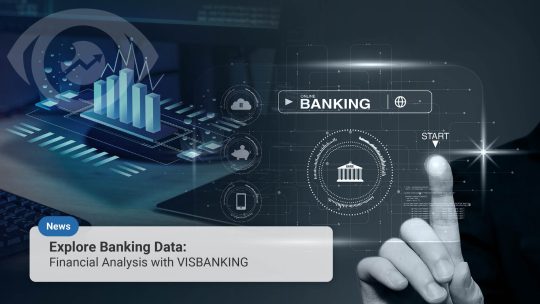
Estimated reading time: 3 minutes
Table of contents- Unveiling the Power of VISBANKING- Decoding the Data
- Real-time Insights
- Features that Redefine Financial Analysis- Interactive Dashboards
- Comparative Analysis
- Predictive Analytics
- How VISBANKING Enhances Financial Decision-Making- Risk Management
- Investment Strategies
- Budgeting and Planning
- Getting Started with VISBANKING- User-Friendly Interface
- Comprehensive Support
- Conclusion: Empowering Your Financial Journey
In the dynamic world of finance, information is power. As businesses and individuals navigate the intricate web of economic landscapes, having a comprehensive understanding of banking data is crucial for making informed decisions. This is where Visbanking steps in, offering a powerful platform for financial analysis that goes beyond the surface.
Unveiling the Power of VISBANKING
Decoding the Data
Visbanking isn't just a platform; it's your gateway to unlocking the secrets hidden in banking data. Whether you're a seasoned financial analyst or a curious individual looking to understand your financial standing better, Visbanking provides the tools you need.
Real-time Insights
In the fast-paced world of finance, timing is everything. Visbanking ensures that you're not left behind with real-time updates and insights. Stay ahead of market trends, track your investments, and make decisions based on the latest information.
Features that Redefine Financial Analysis
Interactive Dashboards
Visbanking boasts interactive dashboards that turn complex financial data into visual narratives. No more drowning in spreadsheets—experience your data in an intuitive and engaging way. Customize your dashboards to focus on what matters most to you.
Comparative Analysis
Understanding your financial standing is more than just looking at numbers; it's about context. Visbanking's comparative analysis tools allow you to benchmark your financial performance against industry standards, helping you identify areas of strength and opportunities for improvement.
Predictive Analytics
Don't just analyze the past; anticipate the future. Visbanking leverages cutting-edge predictive analytics to forecast trends and potential financial outcomes. Empower your decision-making with insights that go beyond historical data.
How VISBANKING Enhances Financial Decision-Making
Risk Management
In the world of finance, risk is inevitable. Visbanking provides robust risk management tools, allowing you to assess and mitigate potential risks before they become problems. Safeguard your financial future with data-driven risk assessments.
Investment Strategies
Whether you're a seasoned investor or just starting, Visbanking helps you fine-tune your investment strategies. Analyze the performance of your portfolio, explore new investment opportunities, and optimize your financial decisions.
Budgeting and Planning
For businesses and individuals alike, effective budgeting is the cornerstone of financial success. Visbanking simplifies budgeting and financial planning with intuitive tools that empower you to set and achieve your financial goals.
Getting Started with VISBANKING
User-Friendly Interface
You don't need to be a financial expert to navigate Visbanking. The platform is designed with a user-friendly interface, making it accessible to individuals and businesses of all sizes. No steep learning curves—just a seamless experience from the start.
Comprehensive Support
Visbanking understands that questions may arise as you explore the platform. That's why we offer comprehensive support to guide you through any challenges. From tutorials to responsive customer service, we're here to ensure you make the most of Visbanking.
Conclusion: Empowering Your Financial Journey
Visbanking is more than a platform; it's a partner in your financial journey. From unraveling the complexities of banking data to providing actionable insights, Visbanking is your key to informed decision-making. Explore the world of financial analysis like never before—empower your decisions, navigate risks, and achieve your financial goals with Visbanking. Your journey to this mastery starts here.
- BIAS: Pioneering the Future of Banking Analysis
- Analyzing US Bank Data: Unveiling Insights through Visbanking Banking Report Portal
- How much tech do you need to know to start a tech company?
- Your bank's decision-making engine might be stuck in the 20th century.
- Did you know that your bank may not be giving you the full picture?
Read the full article
0 notes
Text
Tennessee Files ESG-Related Consumer Protection Suit Against Blackrock

The State of Tennessee confirmed that it has filed a consumer protection suit against Blackrock, Inc. In a statement released on Monday, state Attorney General Jonathan Skrmetti accused Blackrock of misleading Tennessee's citizens about its investment strategies. Specifically, Tennessee has alleged that Blackrock has not been honest about how ESG considerations impact its investment strategies.
The details of the consumer protection suit
According to the consumer protection suit, Blackrock has been offering two conflicting descriptions of its investment strategies. Skrmetti described the conflict between these statements:
“We allege that BlackRock’s inconsistent statements about its investment strategies deprived consumers of the ability to make an informed choice. Some public statements show a company that focuses exclusively on return on investment, others show a company that gives special consideration to environmental factors. Ultimately, I want to make certain that corporations, no matter their size, treat Tennessee consumers fairly and honestly.”
Blackrock, which is the world’s biggest asset management company, has been a leading proponent of ESG goals. As part of its advocacy, the company has been active in the Climate Action 100+ and Net Zero Asset Managers Initiative. As Tennessee’s press release notes, membership in those groups commits participants to a range of “net zero” goals.
Those goals include lobbying for ESG and managing assets in a way that furthers the 2050 “net zero” objective. The consumer protection suit alleges that Blackrock’s commitment to those goals has been at odds with its promises to consumers:
It should be noted that the firm explains many of its shareholder votes are intended to align companies with the aforementioned “net zero” goals. Yet BlackRock’s disclosures do not mention such promises. In fact, BlackRock has told consumers elsewhere that the only consideration driving its investment decisions is return on investment.
ESG under increasing scrutiny
Tennessee is the first state to file this type of ESG-related consumer protection suit. However, it is but one of several U.S. states to push back against the ESG movement—and companies like Blackrock. States like Kentucky and West Virginia have been taking action to bar Blackrock and others from managing state assets. Those actions have been prompted by accusations that Blackrock and some large banks have tried to boycott lending to traditional energy companies.
Related Articles:
- Major Financial Firms Deny Boycotting Energy Companies
- Alleged Epstein Victims File Suit Against JPMorgan Chase, Deutsche Bank
- Class Action Suit Alleges BofA Misled Paycheck Protection Program Borrowers
- Swiss AG Launches Investigation into Credit Suisse Acquisition
- SEC Investigating Goldman Sachs ESG Mutual Funds
Read the full article
0 notes
Text
Is the Fed Sending Mixed Interest Rate Signals to Markets?

Last week, the Federal Reserve decided to maintain its current interest rate posture. Fed Chair Jerome Powell told the press that the central bank is likely done raising rates. In addition, he said that officials had explored the topic of rate reductions in their latest meeting. Subsequent comments from New York Fed President John Williams, however, suggest that the central banks may be sending mixed interest rate signals to markets.
Mixed interest rate signals?
Williams told MSNBC’s Squawk Box that the nation’s central bank is not focused on rate cuts. According to him:
“We aren’t really talking about rate cuts right now. We’re very focused on the question in front of us, which as chair Powell said, the question is: have we gotten monetary policy to sufficiently restrictive stance in order to ensure the inflation comes back down to 2%? That’s the question in front of us.”
When pressed on whether the FOMC members had talked about rate cuts, Williams suggested that any discussion of potential cuts was within the context of members presenting their own opinions and projections for the next three years.
Responding to the markets’ reaction to Powell’s comments
The interviewer also asked Williams about the markets’ reaction to Chairman Powell’s remarks about potential cuts. In the wake of last week’s Fed decision, the Dow spiked to all-time highs to finish the week. Much of that trading optimism appears to have been a direct response to the Fed’s decision to “pencil in” three potential rate cuts next year. Williams said,
“One thing that’s been really interesting over the past year—you know, we track this obviously very closely here at the New York Fed—is the market reactions to all kinds of news, economic data, and all types of events has been much bigger in magnitude, much larger than is historically normal. I think that reflects, in large part, the uncertainty, the unusual nature of the situation we face. So, the fact that we’re seeing big market reactions to pretty much everything has been a pattern that we’ve seen over the year.”
Williams again pointed to three-year projections from the FOMC to close out his comments on potential rate cuts. Other recent appearances from Fed officials have also seemed to suggest mixed interest rate signals. For example, Atlanta's Fed President suggested late last week that a rate cut might not happen until next fall.
Related Articles:
- Fed Boosts Benchmark Interest Rate by 0.75%, Signals More Aggressive Campaign to Combat Inflation
- Bank Capital Rule Changes Proposed by U.S. Regulators
- MARKETS DIVE AS FED RAISES RATES AGAIN AND POWELL SUGGESTS FIGHT AGAINST INFLATION FAR FROM DONE
- Big news! The interest rate wave is at a 22-year high! 📈
- Powell: ‘Long Way to Go’ in Fed’s Fight to Lower Inflation
Read the full article
0 notes
Text
Transitioning from a Traditional Bank to a Digital Bank: What Does it Take?
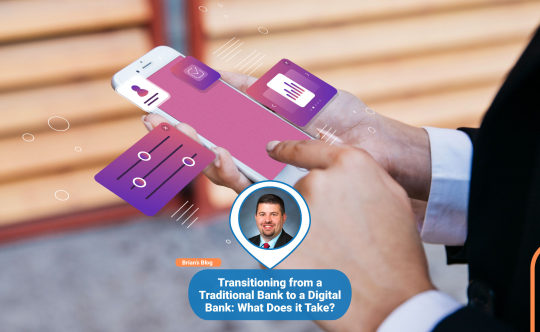
Ever wondered what it takes to transition from a traditional banking system to a digital one? Here's a glimpse into the journey:
1. Aligning Vision:A clear understanding of why the bank wants to go digital is crucial. Is it about staying modern in the competitive landscape or tapping into younger demographics? Knowing 'why' drives everything else.
2. Technology Investment:There's no digital banking without significant investment in technology. We're talking robust, end-to-end systems that facilitate smooth transactions and enhanced security.
3. Regulatory Compliance:In the banking sector, compliance is king. Transitioning to digital means adjusting policies and ensuring adherence to all regulatory requirements.
4. Employee Training:People drive processes, thus training employees on new technologies and changing their mindset towards digitization is essential.
5. Customer Education:A bank can be fully digital, but if its customers aren't comfortable using online services or apps, it’s a wasted effort. Customer-centric design and education are vital for success.
As more traditional banks take steps towards digitization, these considerations will ensure a smoother transition. What are your thoughts on this digital shift?
💡 Let’s stop just collecting data. Let’s start making it work for us. Let’s transform banking, together. 💡
🔔 Follow Brian on Linkedin: Brian Pillmore
Related Links:
- How can technology revolutionize traditional banking?
- Deutsche Bank Exec: Include Fossil Fuel Shares in ESG Funds
- Meet The Team
- New Bank of America App to Make Digital Engagement the Centerpiece of Its Customer Relationships
- JPMorgan Chase Plans Digital Bank in Germany
Read the full article
0 notes